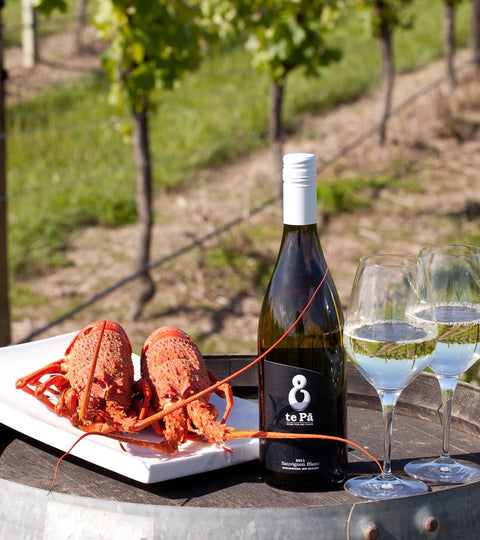Pour Yourself a Glass for Sauvignon Blanc Day!
Friday May 6th 2022 marks International Sauvignon Blanc Day (one of our favourite days of the year, for obvious reasons).
So, in honour of International Sauvignon Blanc Day, let's dive into all things Sauv!
What is Sauvignon Blanc?
Originating from the Loire Valley in France, Sauvignon Blanc grapes produce a dry, crisp white wine, with racing acidity - famous all over the world for its bright, distinctive flavours.
Where does the best Sauvignon Blanc grow?
While many regard France as being the spiritual home of Sauvignon Blanc, New Zealand has grown a reputation in the last few decades for growing some of the world's most distinctive, high quality Sauv.
With its hot days and cool nights, creating dramatic changes in temperature which lead to high acid levels in the wine, Marlborough's geography and terroir is perfectly suited to growing some of the finest examples of Sauvignon Blanc.
What does Sauvignon Blanc taste like?
With its gold-straw colour, Sauvignon Blanc looks very light and inviting in the glass.
The most common aromatics and flavours of Sauvignon Blanc are fresh cut grass, gooseberry, tomato leaf, lemon pith, passionfruit, and grapefruit.
This wine is typically light-medium bodied, with medium alcohol, high acidity, very little sugar (dry), and a crisp finish.
What wine styles can you make from Sauvignon Blanc?
Sauvignon Blanc is also a highly versatile grape, lending itself to the classic style of stainless steel tank fermented wine which is fresh, bright and has racing acidity.
It's also well suited to ageing in oak barrels (like our acclaimed te Pa Sauvignon Blanc Oke), which lends more palate weight, depth, and a touch of flinty, smoky oak that balances out the more vibrant citrus and tropical notes.
And lastly, Sauvignon Blanc can be made into a decadent dessert wine (like our te Pa Sauvignon Blanc Noble). When the grapes are left on the vine for an extended period, and the weather conditions are right for botrytis ('Noble Rot'), the grapes shrink and shrivel, with the sugar content skyrocketing.
Once its carefully harvested, the winemaker then has to balance the fermentation process to get the desired level of sugar and alcohol. It's a real balancing act, but the resulting sweet, luscious dessert wine, demonstrates the incredibly versatile Sauvignon Blanc grape. Some would even say, 'She's got range!'.
Sauvignon Blanc can also be made into sparkling wine, and low-alcohol wine.
What foods pair best with Sauvignon Blanc?
There's a common saying when it comes to food and wine pairings; "If it grows together, it goes together."
So for us, with our home vineyard just 160 meters away from the waters of Cloudy Bay at its closest point, Sauvignon Blanc is just made to be enjoyed with seafood.
From fresh, local Cloudy Bay Clams, to oysters, mussels, paua, and crayfish, to delicate white fish like blue cod or snapper, and more gamey fish like Hapuka (grouper), kingfish and tuna, Sauv is best enjoyed with the bounties of the moana (sea).
Other beautiful pairings include goat's cheese (we like Cherve or feta), fresh seasonal salads with baby peas, asparagus, or cucumber, and cuisines with bright, light, fresh flavours such as Thai or Vietnamese. For meat pairings, keep it light, with chicken, pork or turkey. A herby sauce will complement the meat and wine pairing nicely.
At what temperature should Sauvignon Blanc be served?
Sauv is best enjoyed chilled, but not so cold that the delicious aromatics are suppressed. 12 degrees is the ideal temperature, but practically speaking, you can pop your bottle of Sauv in the fridge for an hour or two, and it will be perfect for drinking.
Will you be enjoying a glass of Sauv tonight?
Make sure you hashtag #SauvBlancDay and tag us in if you're sipping one of ours @tepawines.

